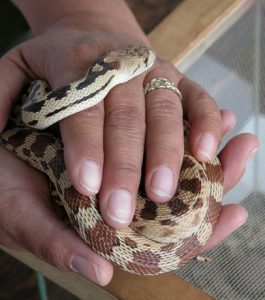Snake Care 101: Embracing Serpentine Companionship


Snakes, with their sleek bodies and enigmatic charm, have long intrigued and captivated humans. While some may hesitate at the thought of owning a snake as a pet, these fascinating creatures offer a unique and rewarding companionship experience. From their low maintenance requirements to their serene presence, owning a snake can open a world of wonder for pet enthusiasts.

The allure of owning a snake as a pet lies in their mystique and beauty. With a wide variety of species to choose from, each offering its own distinct characteristics and colors, there’s a snake for every personality and preference. Whether you’re drawn to the vibrant patterns of a corn snake or the majestic grace of a ball python, owning a snake allows you to welcome a slice of the exotic into your home. Consider factors such as size, temperament, and activity level when selecting the right snake for you.

Housing and Habitat– Creating a suitable habitat is crucial for the health and well-being of your pet snake. Depending on the species, you’ll need an appropriately sized enclosure with secure lids to prevent escapes. Provide hiding spots, branches, and other enrichments to mimic their natural environment. Additionally, ensure proper temperature gradients and humidity levels within the enclosure, as these factors are essential for digestion, shedding, and overall health.

Feeding– Snakes are carnivores, and their diets primarily consist of rodents such as mice and rats. Depending on the size and age of your snake, feeding frequency may vary, but most adult snakes are typically fed once every one to two weeks. It’s essential to provide appropriately sized prey items to prevent regurgitation and other feeding-related issues. Some snakes may prefer live prey, while others can be transitioned to pre-killed or frozen-thawed rodents for safety reasons.

Handling and Socialization – Handling your pet snake can be a rewarding experience, but it’s essential to approach it with caution and respect for the animal’s boundaries. Start with short handling sessions to allow your snake to acclimate to your touch gradually. Always support the snake’s body and avoid sudden movements or loud noises that may stress them. Remember that not all snakes enjoy handling, so observe your pet’s body language and respond accordingly.

Healthcare: Regular veterinary check-ups are essential for monitoring your snake’s health and detecting any potential issues early on. Signs of illness in snakes can be subtle, so it’s crucial to familiarize yourself with common health problems and symptoms. Additionally, maintain a clean environment and practice proper hygiene to prevent parasites and infections.

Owning a snake as a pet can be a fulfilling and enriching experience for reptile enthusiasts. With proper research, care, and dedication, you can provide a happy and healthy life for your slithering companion. Remember to respect the unique needs and behaviors of your snake and enjoy the journey of learning and growing together.





Leave a Reply